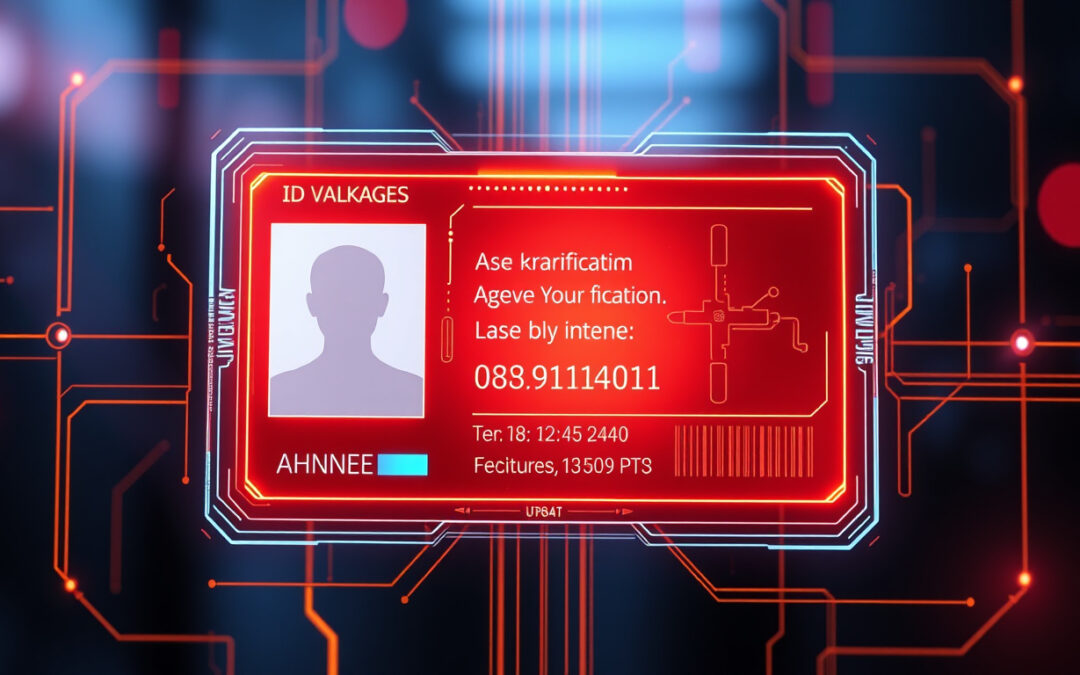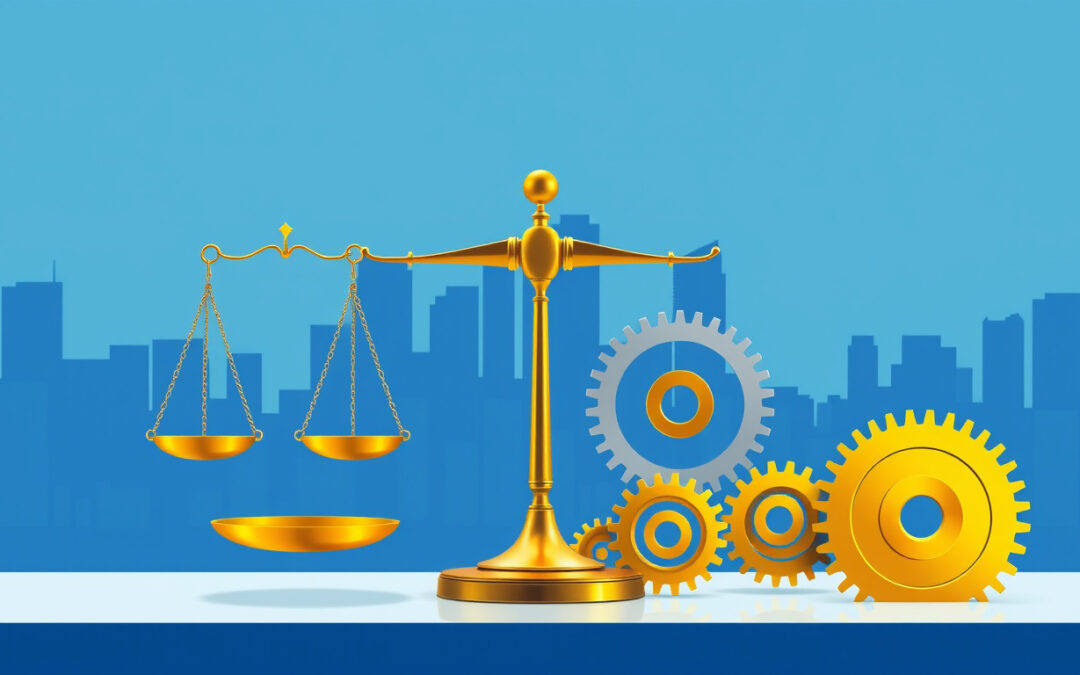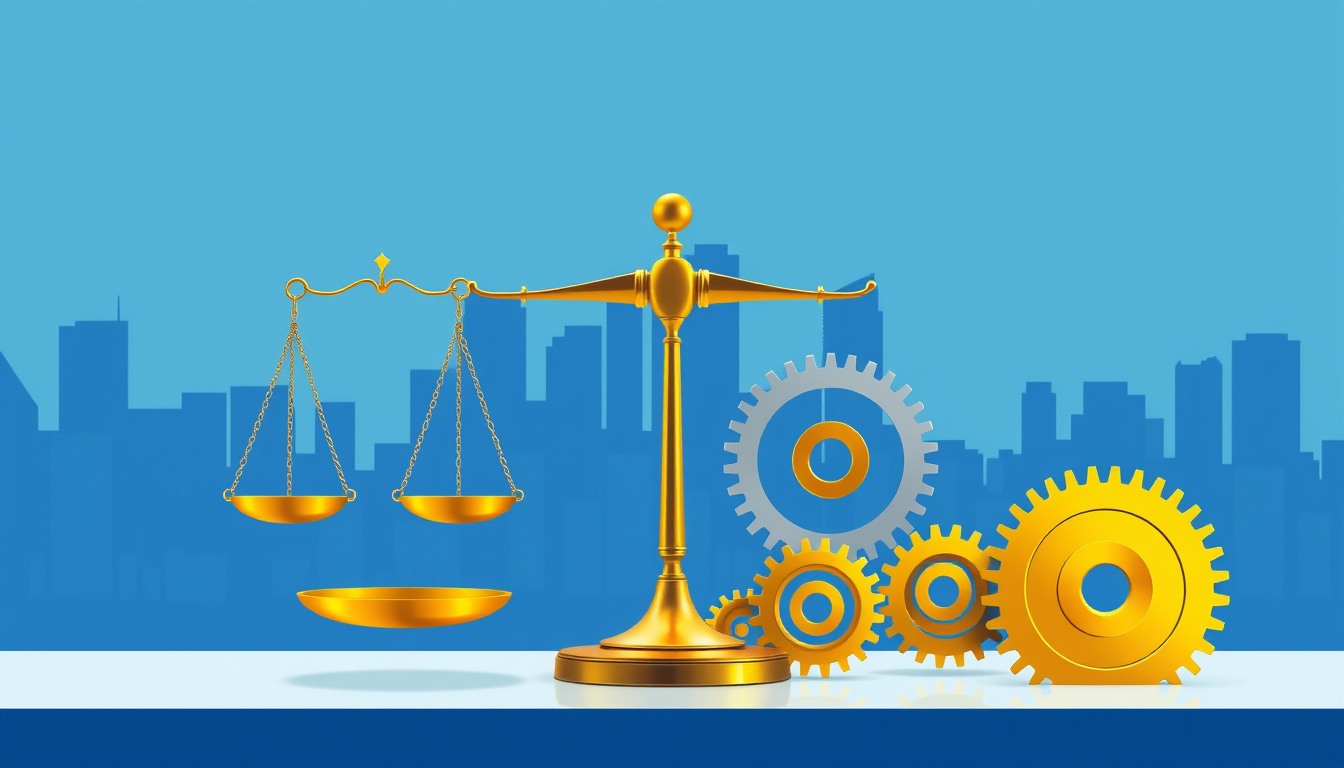
BLOG
Navigating the permitting process can often feel daunting, especially for those unfamiliar with local regulations. Whether you’re planning a residential renovation, constructing a new commercial building, or installing specialized equipment, understanding the permitting process is essential for ensuring compliance and avoiding costly delays. In this article, we’ll explain what permitting involves, outline the typical steps, and share tips on how to navigate local regulations efficiently.
What Is Permitting and Why Is It Important?
Permitting is the procedure by which local government authorities authorize certain activities—such as construction, renovations, or environmental modifications—ensuring they meet safety, zoning, environmental, and building codes. The permitting process is designed to protect public safety, promote sustainable development, and ensure community standards are maintained.
Obtaining the proper permits is crucial because operating without them can result in penalties, legal issues, or the need to undo work already completed. Furthermore, permits add legitimacy to projects, which can be beneficial when seeking financing, selling property, or passing inspections.
Types of Permits You Might Need
The permitting process varies depending on the project scope and local jurisdiction. Here are some common permit types:
- Building Permits: Required for new constructions, additions, or structural modifications.
- Electrical, Plumbing, and Mechanical Permits: Needed for installations and upgrades involving essential systems.
- Environmental Permits: Necessary when projects impact wetlands, cause pollution, or involve hazardous materials.
- Zoning Permits: Ensure projects comply with local land use regulations.
- Special Use Permits: For unique projects that don’t fit standard regulations, such as telecommunication towers or large signage.
Knowing which permits apply is the first step towards a smooth application process.
The Typical Permitting Process: Step-by-Step
Understanding the permitting process can make it more manageable. While specific procedures may vary by location, the general steps are as follows:
1. Research Local Regulations and Requirements
Start by consulting your local government’s planning or building department. This involves reviewing zoning maps, building codes, and permit checklists. Many municipalities provide online resources detailing permit procedures and application documents.
2. Prepare Detailed Project Plans and Documentation
Permitting authorities require comprehensive plans to evaluate compliance. This includes architectural drawings, engineering reports, environmental assessments, and safety plans. Hiring professionals like architects or engineers can facilitate this step.
3. Submit Permit Applications
Complete the necessary application forms and submit them along with supporting documentation. There may be fees involved, which vary based on project size, scope, and locality.
4. Plan Review and Corrections
After submission, authorities review your application for compliance. They may request additional information or modifications—respond promptly to avoid delays.
5. Permit Approval
Once your application passes all reviews, you’ll receive approval and the corresponding permit. Keep a copy visible on-site or accessible for inspections.
6. Inspections During Construction
Many projects require inspections at various stages. These verify proper construction according to approved plans. Schedule inspections as required, and address any issues identified.
7. Final Approval and Certificate of Occupancy
Upon completing inspections and ensuring compliance, you’ll receive a certificate of occupancy or final approval, allowing you to legally use or occupy the space.
Tips for Navigating Local Permitting Regulations Efficiently
To streamline the permitting process, consider these practical tips:
- Engage Local Experts: Hiring permit consultants or local architects familiar with regional regulations can save time.
- Plan Ahead: Begin research and documentation early to prevent last-minute surprises.
- Maintain Clear Communication: Keep open lines with permitting authorities and promptly respond to requests.
- Use Online Resources: Many jurisdictions offer online permitting portals, reducing paperwork and wait times.
- Keep Records Organized: Store all permits, approvals, and correspondence safely for future reference.
Common Challenges and How to Overcome Them
Navigating permitting processes can be complex, with challenges like delays, misunderstandings, or unexpected requirements. Here are some common issues and solutions:
- Delays Due to Incomplete Applications: Double-check all documentation before submission.
- Variations in Regulations: Ensure familiarity with local codes, which can differ significantly even within the same state.
- Unexpected Fees: Request a clear fee schedule upfront, and budget accordingly.
- Changes to Project Scope: Notify authorities of changes early to determine if new permits or adjustments are needed.
Conclusion: Mastering the Permitting Process
Understanding permitting is essential for any construction, renovation, or project involving local regulations. By thoroughly researching requirements, preparing detailed documentation, and maintaining consistent communication, you can significantly reduce the time and frustration associated with obtaining permits. Remember, compliance not only legalizes your project but also safeguards everyone involved.
For comprehensive details tailored to your specific location, always consult your local government’s planning or building department. Their guidance, combined with professional support, can turn a daunting permitting process into a manageable and successful endeavor.
Frequently Asked Questions About Permitting
1. What is the permitting process, and how long does it usually take?
The permitting process involves submitting applications, undergoing reviews, and obtaining approvals before commencing work. The timeline varies by project complexity and jurisdiction but generally ranges from a few weeks to several months.
2. How can I make permitting easier for my construction project?
Engage experienced local professionals, prepare complete documentation, and communicate proactively with authorities. Using online permitting portals and early planning can significantly streamline your experience.
3. Do I need permits for small renovations or minor repairs?
Most local regulations require permits for significant renovations or structural modifications. Minor repairs, such as painting or replacing fixtures, often don’t require permits, but it’s essential to verify with your local permitting office.
Additional Resources
For more detailed information about permitting specific to your area, visit your local government’s official website or contact the permitting department directly. Reliable sources like the U.S. Small Business Administration provide guidance on navigating local regulations for small businesses engaged in construction or renovation.
Navigating permitting processes efficiently is crucial for project success. With thorough research, proper documentation, and proactive communication, you can turn a potentially complicated process into a straightforward task, ensuring your project proceeds smoothly within legal boundaries.

BLOG
In the security industry, patrol training is a fundamental component that ensures personnel are prepared to handle a wide array of situations effectively and safely. Well-trained security guards not only safeguard property and people but also act as a visible deterrent to potential offenders. This comprehensive guide aims to provide insights into how to optimize patrol training for security personnel, ensuring they are equipped with the skills, knowledge, and confidence necessary for their vital roles.
Why Is Patrol Training Crucial for Security Personnel?
Patrol training is essential because it directly impacts a security guard’s ability to perform their duties proficiently. Proper training helps personnel:
- Detect and respond to security breaches promptly
- Prevent incidents before they escalate
- Manage emergencies effectively
- Uphold client and company standards
- Maintain personal safety and adhere to legal standards
With the increasing complexity of security threats—including cyber incidents, terrorism, and vandalism—comprehensive patrol training has become more critical than ever.
Components of Effective Patrol Training
Designing a robust patrol training program involves multiple key elements:
1. Orientation and Company Policies
Begin with familiarizing security personnel with the company’s mission, policies, and procedures. This builds a foundation of professionalism and clarity.
2. Knowledge of the Environment
Security guards should receive detailed insights into the premises they will patrol. This encompasses understanding access points, sensitive areas, escape routes, and potential hazards.
3. Patrolling Techniques
Training should cover various patrol methods, such as:
- Foot patrols
- Vehicle patrols
- Surveillance techniques
- Use of technology, e.g., CCTV and alarm systems
4. Communication Skills
Clear, confident communication is vital. Training should include reporting incidents, using radios, and engaging professionally with the public and colleagues.
5. Legal and Ethical Responsibilities
Guards must understand their legal rights and obligations, including the use of force, detainment procedures, and privacy laws.
6. Emergency Response Procedures
Preparation for fire, medical emergencies, natural disasters, and active threat situations ensures guards can respond swiftly and effectively.
7. Scenario-Based Drills
Simulated scenarios prepare guards for real-life incidents, testing reaction times, decision-making, and teamwork.
Best Practices for Designing Patrol Training Programs
Creating an effective training curriculum involves applying best practices, such as:
- Regular Refresher Courses: Keeping skills sharp and updating knowledge on new threats or protocols.
- Hands-On Training: Practical exercises are more effective than classroom learning alone.
- Assessment and Feedback: Regular evaluations help identify areas for improvement.
- Use of Modern Technology: Incorporating tools like mobile patrol management apps enhances efficiency.
- Mentoring and Supervision: Experienced guards mentoring newcomers can improve confidence and skill levels.
How to Implement a Successful Patrol Training Program
Implementing a strategic patrol training program involves several steps:
- Conduct a Needs Assessment: Identify knowledge gaps and specific risks at your sites.
- Develop Training Materials: Tailor content to address identified needs, legal requirements, and industry standards.
- Train Instructors: Ensure trainers are knowledgeable and capable of engaging trainees effectively.
- Schedule Regular Training Sessions: Maintain consistency and ensure ongoing skill development.
- Monitor and Evaluate: Keep track of guard performance through regular audits and feedback mechanisms.
- Adjust as Needed: Continually update training modules based on evolving threats and technological advancements.
Challenges in Patrol Training and How to Overcome Them
Despite best efforts, there are common obstacles in patrol training, such as:
- High Turnover Rates: Frequent hiring can disrupt training continuity. Solution: Implement onboarding programs that are quick but comprehensive.
- Resource Limitations: Budget constraints may limit training scope. Solution: Use online modules and group exercises to maximize resources.
- Keeping Up with Evolving Threats: Security landscapes are dynamic. Solution: Schedule ongoing training sessions and industry updates.
Key Benefits of Proper Patrol Training
Investing in high-quality patrol training yields numerous benefits:
- Increased incident detection and response efficiency
- Reduced liability risks for companies
- Improved safety for staff and visitors
- Enhanced reputation and client satisfaction
- Better compliance with legal and industry standards
Summary: Patrol Training as a Strategic Investment
Effective patrol training is not merely an operational requirement but a strategic investment in your security infrastructure. It enhances the capabilities of security personnel, ensuring they can act confidently and competently in diverse situations. By focusing on continuous improvement, hands-on learning, and adherence to best practices, organizations can significantly elevate their security posture.
Frequently Asked Questions About Patrol Training
Q1: What are the core elements of patrol training for security guards?
A: Core elements include awareness of the environment, patrol techniques, communication skills, legal responsibilities, emergency response procedures, and scenario-based drills.
Q2: How often should patrol training be refreshed?
A: Ideally, refresher courses should be conducted every 6 to 12 months, with additional training prompted by new threats, policies, or technological updates.
Q3: Can patrol training be effectively delivered online?
A: Yes, online training modules are useful for theoretical components, but hands-on practical training should be conducted in person to ensure skill mastery.
Final Thoughts
In an era where security threats are continually evolving, patrol training serves as the backbone of a reliable security operation. Properly trained personnel act with confidence, skill, and professionalism, making your security system more effective and your environment safer. Investing in comprehensive patrol training not only safeguards assets and lives but also builds trust and credibility with clients and stakeholders.
For further insights into security best practices, consult authoritative sources such as the SIA (Security Industry Authority), which offers detailed guidelines and standards for security personnel training.
By prioritizing structured, ongoing patrol training, organizations can elevate their security services from ordinary to outstanding, providing peace of mind in an unpredictable world.

BLOG
In today’s digital age, online platforms face increasing scrutiny to ensure they comply with legal regulations and protect vulnerable users. One vital aspect of this compliance is age verification. Whether it’s e-commerce, social media, gaming, or streaming services, verifying users’ ages helps create a safer digital environment and avoid legal penalties.
This comprehensive guide covers all aspects of age verification, including its importance, methods, challenges, and best practices for online platforms.
Why Is Age Verification Important for Online Platforms?
Age verification plays a crucial role in safeguarding minors from inappropriate content, illegal transactions, and potential exploitation. It also helps businesses:
- Comply with legal regulations such as COPPA (Children’s Online Privacy Protection Act) in the U.S. and GDPR in Europe.
- Prevent underage access to age-restricted products or services, like alcohol, gambling, or adult content.
- Shield their reputation from potential scandals or legal actions resulting from non-compliance.
Moreover, a robust age verification system fosters trust with customers, demonstrating a commitment to safety and responsible content management.
Common Uses of Age Verification in Digital Environments
- Online gaming and gambling: Ensuring minors do not access gambling platforms.
- Social networking: Preventing underage users from creating accounts or sharing inappropriate content.
- E-commerce: Validating the age of buyers for restricted items like alcohol, tobacco, or pharmaceuticals.
- Content streaming: Limiting access to age-appropriate movies, series, or adult content.
- Educational portals: Confirming age before providing access to certain educational materials.
How Does Age Verification Work?
Age verification involves collecting, validating, and confirming a user’s age before granting them access to specific content or services. The process can be straightforward or elaborate, depending on platform needs and legal requirements.
Common Age Verification Methods
- Self-Declaration: Users enter their date of birth, which the platform verifies against its records.
- Document Verification: Users upload identification documents like passports or driver’s licenses, which are reviewed manually or through automated systems.
- Third-Party Verification Services: External providers pull data from official records, credit bureaus, or government databases to confirm age.
- Credit Card or Payment Verification: Validating the card information can serve as a proxy for verifying age, especially if the bank restricts youth cards.
- Biometric Verification: Using facial recognition or fingerprint scans for identity confirmation.
Each method has advantages and challenges concerning privacy, user experience, reliability, and compliance.
Choosing the Right Age Verification Solution
Selecting an appropriate age verification method depends on factors like the target demographic, type of service, budget, and legal obligations.
Key Considerations:
- Accuracy and reliability: Ensure the method effectively verifies age without false positives or negatives.
- User experience: Simplify the process to minimize drop-offs; overly complex procedures can frustrate users.
- Privacy and Data Security: Adhere to data protection laws and guarantee user information is securely stored.
- Regulatory compliance: Follow regional laws governing age verification procedures.
Implementation Tips:
- Use multi-layered verification, combining methods (e.g., self-declaration plus document upload) for enhanced accuracy.
- Provide clear explanations about why age verification is necessary and how data is used.
- Consider integrating with trusted third-party verification providers for scalable and compliant solutions.
Challenges and Solutions in Age Verification
While age verification is essential, implementing it comes with challenges:
Common Challenges
- Privacy Concerns: Users may be reluctant to share personal documents or data.
- Fraud and Evasion: Sophisticated methods can bypass age verification, such as fake IDs or stolen identities.
- Legal Variability: Different countries have different regulations regarding age verification and data handling.
- User Experience: Lengthy or intrusive verification processes can deter users.
Solutions
- Employ encrypted, privacy-focused verification tools to build trust.
- Use sophisticated fraud detection and identity verification technologies.
- Stay updated on regional legal requirements and adapt procedures accordingly.
- Offer alternative verification options for users facing difficulties.
Best Practices for Implementing Age Verification
To ensure a smooth and compliant age verification process, consider these best practices:
- Transparency: Clearly explain why age verification is necessary and how the data will be used.
- Minimize Data Collection: Collect only the information needed for verification to reduce privacy risks.
- Secure Data Storage: Use encryption and other security measures to protect sensitive user data.
- Regularly Update Procedures: Keep verification methods compliant with evolving regulations and technological advances.
- Offer Support: Provide help channels for users encountering issues during verification.
- Document Compliance: Maintain records of verification processes to demonstrate regulatory adherence if audited.
Future Trends in Age Verification
Advances in technology are shaping the future of age verification, making it more seamless, secure, and privacy-conscious:
- AI and Biometrics: Enhanced facial recognition and biometric verification to streamline processes.
- Blockchain Technology: Immutable, verifiable records of age confirmation.
- Decentralized Identity Platforms: Users control their identity data, sharing only necessary information.
- Regulation Development: Governments are continuously updating laws, influencing verification standards.
Adapting to these trends will be crucial for online platforms aiming to stay compliant and provide user-friendly experiences.
Summary: Key Takeaways on Age Verification
- Implementing age verification is vital for legal compliance and user safety.
- Various methods are available; choosing the right one depends on your platform’s needs.
- Challenges like privacy concerns and fraud can be mitigated through technology and best practices.
- Transparency, data security, and ongoing compliance are critical components of effective age verification.
- Staying abreast of technological and regulatory developments ensures your platform remains compliant and trustworthy.
Frequently Asked Questions (FAQs)
Q1: What is age verification, and why is it necessary on online platforms?
A: Age verification is the process of confirming a user’s age before granting access to restricted content or services. It is necessary to comply with legal regulations, prevent access by minors to inappropriate content, and protect users.
Q2: What are the most common methods of age verification for online services?
A: The most common methods include self-declaration (entering date of birth), uploading identification documents, third-party verification services, and biometric verification such as facial recognition.
Q3: How can online platforms ensure user privacy when implementing age verification?
A: Platforms should minimize data collection, use secure encryption, be transparent about data use, comply with privacy laws like GDPR, and choose trusted verification providers to handle sensitive information.
Final Thoughts
Effective age verification is not just about regulatory compliance; it’s about fostering a safe and trustworthy online environment. By understanding available methods, potential challenges, and best practices, online platforms can implement age verification systems that serve both their legal obligations and their users’ safety.
For further details, consider consulting authoritative sources such as the European Commission’s guidelines on age verification and data protection (source). Staying proactive and well-informed ensures that your platform remains compliant and user-friendly in an evolving digital landscape.

BLOG
Starting or operating a business that involves the sale or service of alcoholic beverages requires careful consideration of legal requirements. One critical aspect is liquor licensing, which governs the distribution, sale, and consumption of alcohol within your jurisdiction. Ensuring proper compliance with liquor licensing laws not only prevents legal penalties but also sustains a reputable and successful enterprise.
In this comprehensive guide, we’ll walk through everything you need to know about liquor licensing, including the types of licenses available, application procedures, compliance tips, and frequently asked questions. Whether you’re opening a bar, restaurant, or retail liquor store, understanding liquor licensing is essential for your business’s success.
What Is Liquor Licensing?
Liquor licensing refers to the legal authorization granted by government authorities to individuals or entities to sell, serve, or manufacture alcohol. This license aims to regulate alcohol consumption’s public health and safety aspects and prevent illegal sales or underage drinking.
The specific rules and licensing processes can vary widely depending on your state, province, or country, but the core purpose remains the same: to ensure responsible alcohol distribution and consumption.
Types of Liquor Licenses
Understanding the different types of liquor licenses is paramount to choosing the appropriate license for your business operations. Here are some common license types:
1. Manufacturer Licenses
- For producing alcohol, such as breweries, wineries, distilleries, or cideries.
2. Wholesale Licenses
- For businesses that purchase alcohol to resell to retailers, bars, or restaurants.
3. Retail Licenses
- For outlets selling alcohol directly to consumers, including:
- On-license: Permits alcohol sale for consumption on the premises, e.g., bars and restaurants.
- Off-license: Permits sale for consumption elsewhere, e.g., liquor stores.
4. Special Licenses
- For specific events or limited-time alcohol sales, such as festivals, private parties, or charity events.
The Liquor Licensing Application Process
Applying for a liquor license involves several critical steps:
Step 1: Research Local Regulations
Start by researching your local government or licensing authority’s rules. Many regions have specialized agencies overseeing liquor licensing, such as state or provincial liquor control boards.
Step 2: Meet Requirements
Common requirements include:
- Minimum age for applicants.
- Background checks.
- Business location compliance.
- Zoning restrictions.
- Proof of responsible management.
Step 3: Prepare Necessary Documentation
Typically, you’ll need:
- Business registration documents.
- Proof of ownership or lease agreement.
- Detailed floor plans and layout.
- Security and safety plans.
- Evidence of responsible alcohol management training.
Step 4: Submit Application and Pay Fees
Fill out all forms accurately and submit them along with the required fees. Processing times vary, so apply well in advance of opening.
Step 5: Inspection and Compliance Checks
Authorities may conduct inspections and verify compliance with health, safety, and zoning standards before issuing a license.
Step 6: License Approval and Renewal
Once approved, you’ll receive your liquor license, which typically requires periodic renewal and adherence to ongoing compliance standards.
Key Tips for Ensuring Business Compliance with Liquor Licensing Laws
Running a licensed alcohol business demands ongoing responsibility. Here are essential tips for maintaining compliance:
1. Stay Updated on Regulations
Laws surrounding liquor licensing can change. Regularly review updates from your licensing authority to ensure ongoing compliance.
2. Train Your Staff
Effective staff training on responsible service, legal drinking age, and handling intoxicated patrons protects both your customers and your license.
3. Maintain Accurate Records
Keep detailed records of all alcohol purchases, sales, and employee training. Proper record-keeping helps in audits and compliance verification.
4. Enforce Age Restrictions
Implement strict age verification processes to prevent underage sales, which can result in hefty fines or license revocation.
5. Adhere to Operating Hours
Operate only during permitted hours. Violating permitted times can lead to penalties and jeopardize your license.
6. Implement Security Measures
Install surveillance, security personnel, and responsible alcohol management practices to foster a safe environment.
7. Regularly Audit Your Business
Conduct internal audits to identify potential compliance gaps and address them proactively.
Common Challenges in Liquor Licensing
While obtaining a liquor license is straightforward in principle, several challenges can arise:
- Delays in approval due to backlog or incomplete applications.
- Changing regulations requiring ongoing adjustments.
- Community opposition in local licensing hearings.
- Operational restrictions post-approval, like limited hours or menu restrictions.
Being proactive and maintaining good communication with licensing authorities can mitigate these challenges.
Frequently Asked Questions about Liquor Licensing
1. How long does the liquor licensing process typically take?
Processing times vary significantly depending on your location and license type. It can range from a few weeks to several months. Planning well ahead of your intended opening ensures you meet deadlines.
2. Can I operate without a liquor license?
No. Operating without a valid liquor license is illegal and can result in penalties, fines, and shutdowns. It’s imperative to obtain the proper license before selling or serving alcohol.
3. How often do I need to renew my liquor license?
Most jurisdictions require annual or biennial renewal. Failure to renew can result in license suspension or revocation, so keep track of renewal deadlines and maintain compliance.
Importance of Expert Guidance
Navigating the complexities of liquor licensing can be challenging. Consulting with legal experts or licensing specialists can help ensure your application is accurate and complete, decreasing the risk of delays or rejection. Many local governments also provide resources and assistance—taking advantage of these can streamline your licensing process.
Conclusion
Liquor licensing is a vital component of responsible alcohol business operation. It ensures that alcoholic beverages are sold and served lawfully, protecting your business, customers, and the community. By understanding the different license types, following application procedures carefully, and maintaining ongoing compliance, you can operate confidently within the legal framework.
Remember, staying informed about relevant laws and best practices is key to long-term success. For more detailed guidance tailored to your specific location, consult official sources such as your local liquor control authority or industry associations. Ensuring proper liquor licensing isn’t just about legality—it’s about fostering a responsible, reputable, and thriving business.
References
- For further information on liquor licensing requirements and regulations, visit the official website of your local liquor control authority or government department.
Starting your liquor business on the right legal footing begins with understanding licensing. Stay compliant, and your venture will have a solid foundation for success.

BLOG
In today’s rapidly evolving business landscape, understanding the legal framework and compliance guide is essential for organizations of all sizes. Whether you are a startup navigating the intricacies of the law for the first time or an established business seeking to refresh your compliance strategies, having a firm grasp of the legal landscape is crucial. This article aims to demystify the legal framework and compliance guide by providing insights into the key elements of compliance, the legislation that shapes it, as well as best practices that can help mitigate risks. We’ll also explore common challenges businesses face when navigating these legal waters, and offer resources to ensure ongoing compliance support. By the end of this guide, readers will be better equipped to implement a robust legal compliance strategy that adheres to current regulations and fosters business integrity.

Key Takeaways
- A legal framework provides the structure for understanding laws and regulations in various contexts.
- Compliance requirements vary by industry and necessitate careful consideration to avoid legal pitfalls.
- Key legislation, such as data protection laws, plays a fundamental role in shaping compliance practices.
- Implementing best practices for legal compliance can mitigate risks and enhance organizational integrity.
- Ongoing support and resources are essential for adapting to changes in legal frameworks and maintaining compliance.
Introduction to Legal Frameworks
In today’s dynamic legal landscape, understanding the intricacies of a legal framework and compliance guide is essential for businesses and organizations to operate effectively. A legal framework provides the structural underpinnings for laws, regulations, and guidelines that govern various sectors, including business, healthcare, and environmental standards. Compliance, on the other hand, involves adhering to these established legal stipulations to mitigate risks, avoid penalties, and maintain a positive reputation. As regulatory requirements evolve, having a robust legal framework and compliance guide ensures that entities can navigate complex legal environments, aligning their operations with prevailing laws while fostering ethical practices and accountability. This article will delve into the key components of legal frameworks, the importance of compliance, and practical steps for organizations seeking to develop or enhance their legal strategies.
Understanding Compliance Requirements
In today’s complex business landscape, understanding the legal framework and compliance guide is essential for any organization seeking to maintain its credibility and safeguard its operations. Compliance requirements vary by industry and region, encompassing everything from data protection laws to health and safety standards. By familiarizing yourself with the legal framework that governs your business, you can anticipate regulatory changes, mitigate risks, and ensure that your organization adheres to required standards. This proactive approach not only helps in avoiding hefty fines and legal troubles but also builds trust with clients and stakeholders. In this article, we will break down the key aspects of a comprehensive compliance guide and explore how businesses can effectively navigate the intricate regulatory environment.
‘The law is not a mere code of rules, but a living embodiment of the freedom and community values we strive to protect and uphold.’ – Unknown

Key Legislation and Regulations
Understanding the legal framework and compliance guide is essential for businesses and individuals alike, as it lays the groundwork for navigating the complex world of laws and regulations. The key legislation often comprises federal, state, and local laws, all of which must be adhered to in order to operate efficiently and responsibly. For instance, laws such as the Sarbanes-Oxley Act and the General Data Protection Regulation (GDPR) highlight the necessity of maintaining transparency and protecting personal information. Additionally, industry-specific regulations, such as those governing healthcare, finance, and environmental practices, pose unique compliance challenges. By staying informed about these relevant statutes and regulations, individuals can better understand their rights and obligations while ensuring that their business operations align with current legal standards. Therefore, a well-structured legal framework and compliance guide not only aids in mitigating legal risks but also fosters a culture of accountability and ethical behavior within organizations.
Best Practices for Legal Compliance
Navigating the complex landscape of legal regulations is crucial for businesses of all sizes. A comprehensive legal framework and compliance guide is essential for ensuring that your organization adheres to applicable laws and regulations while minimizing risk. To develop an effective compliance strategy, companies should first conduct a thorough risk assessment to identify potential legal vulnerabilities. This should be followed by establishing clear policies and procedures that align with relevant legislation and industry standards. Employee training plays a vital role in fostering a culture of compliance, ensuring everyone understands their responsibilities regarding legal obligations. Additionally, regular audits and reviews of compliance efforts can help organizations stay ahead of changes in the legal environment. By following these best practices, businesses can create a robust legal framework that not only meets compliance requirements but also enhances overall operational integrity.

Challenges in Navigating Legal Frameworks
Navigating the complexities of a legal framework can often present significant challenges for businesses and individuals alike. Understanding the nuances of laws and regulations in various jurisdictions is crucial to ensure compliance and mitigate risks. A comprehensive legal framework and compliance guide can serve as an invaluable resource in simplifying these complexities. Such a guide typically outlines the key legal requirements that must be adhered to, helping organizations align their operations with relevant legislation. Furthermore, it can highlight potential pitfalls, ensuring that stakeholders are aware of compliance obligations that may vary notably between regions. As regulations continue to evolve, leveraging a thorough compliance guide can empower businesses to stay informed, remain adaptable, and proactively manage their compliance strategies to avoid costly penalties and reputational damage.
Resources for Ongoing Compliance Support
In today’s rapidly evolving regulatory landscape, maintaining adherence to laws and regulations is crucial for any organization seeking to foster trust and mitigate risks. A comprehensive legal framework and compliance guide serves as an essential resource for businesses of all sizes. It typically outlines the applicable legal obligations, industry standards, and best practices to ensure that your organization remains compliant. Utilizing a well-documented compliance guide can streamline your processes, helping you to identify potential areas of vulnerability while also providing clear instructions for ongoing compliance management. Furthermore, many organizations provide ongoing support and training to interpret complex legal requirements and implement effective strategies. By leveraging these resources, businesses can not only safeguard themselves against potential legal ramifications but also enhance their overall operational efficiency.









